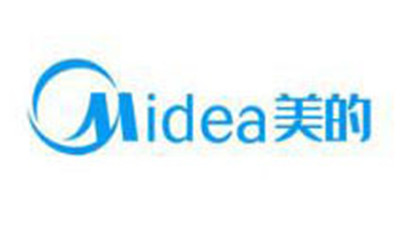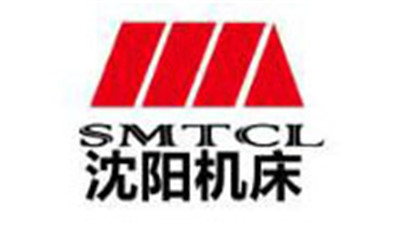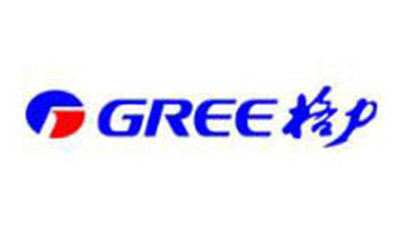Top 10 Control Transformers to Elevate Your 2025 Electrical Projects
Table of Contents
- Top Control Transformers: Key Players in Evolving Electrical Efficiency
- Understanding the Role of Control Transformers in Smart Grid Applications
- Performance Metrics: Comparing Voltage Regulation of 2025's Leading Models
- Cost-Efficiency Analysis of High-Voltage vs. Low-Voltage Control Transformers
- Integration of IoT in Control Transformer Technology for Enhanced Monitoring
- Future Trends: Sustainable Practices in Control Transformer Manufacturing and Design
- Optimal Performance and Reliable Stability: The Essential Role of Machine Tool Control Transformers in Industrial Applications
- FAQS
- Conclusion
- Related Posts
As we gear up for 2025, it's pretty clear that the world of electrical projects is about to see some big changes. Thanks to rapid tech advancements and the increasing push for better efficiency and reliability, things are evolving quickly. One key player in this entire shift is the Control Transformer, which is absolutely essential for keeping various electrical systems running smoothly. I recently came across a report from the International Electrotechnical Commission that points out the global market for control transformers is expected to grow at about 7.5% annually over the next five years. That really underscores how important these little devices are becoming in today’s modern setups.

Industry pro John Smith, who’s been at the forefront of transformer tech at PowerTech Solutions, puts it nicely when he says, 'Control Transformers aren’t just parts — they’re basically the backbone of electrical control systems that boost performance and keep things safe.' His words highlight a real shift in how engineers and project managers are approaching electrical design. Now, there's a big focus on choosing high-quality control transformers that meet strict standards and specs.
So, with all this in mind, we’re excited to introduce our list of the 'Top 10 Control Transformers to Elevate Your 2025 Electrical Projects.' Whether you’re a seasoned pro or just starting out, this guide is meant to help you pick the best solutions to boost your systems while staying ahead of industry trends.
Top Control Transformers: Key Players in Evolving Electrical Efficiency
In the realm of modern electrical engineering, control transformers play a pivotal role in enhancing system efficiency and reliability. As technology continues to evolve, these transformers are designed to meet the increasing demands for energy efficiency, thereby optimizing overall performance in electrical projects. Key manufacturers in the industry are focusing on improving their designs to cater to the complex requirements of 2025 projects, ensuring that engineers have access to cutting-edge solutions for their specific needs.

The top control transformers are characterized by advanced features such as lower energy losses, improved thermal management, and compact designs. These innovations not only contribute to a reduction in operational costs but also support sustainability efforts within the industry. As electrical systems become more interconnected and sophisticated, the role of control transformers as essential components for maintaining voltage stability and protecting sensitive equipment cannot be overstated. It is crucial for project managers and engineers to consider these pivotal players when planning for the future of electrical efficiency.
Understanding the Role of Control Transformers in Smart Grid Applications
Control transformers play a critical role in modern smart grid applications by facilitating the accurate conversion of voltage levels for various electrical devices. These specialized transformers ensure that control systems receive the correct voltage to function optimally, thus enhancing the reliability and efficiency of power distribution. In environments where smart technology predominates, control transformers help stabilize the grid by maintaining ideal operating conditions, ultimately contributing to smarter energy management.
When selecting control transformers for your projects, it's essential to consider the specific needs of your application. Tip: Always assess the voltage requirements and load capacity to ensure compatibility. The right transformer not only improves system performance but also reduces the likelihood of equipment failure.
Moreover, as innovation continues to shape the energy landscape, control transformers are becoming increasingly integrated with monitoring and diagnostics features. Tip: Incorporating transformers with advanced functionalities can provide real-time data, aiding in proactive maintenance and system enhancements. This can lead to more efficient use of resources and a greener approach to energy consumption in your electrical projects.
Performance Metrics: Comparing Voltage Regulation of 2025's Leading Models
As electrical projects evolve, selecting the right control transformer is crucial for optimal performance. In 2025, the leading models are distinguished not just by their build quality but by their voltage regulation capabilities. According to the Electrical Engineering Journal's latest report, top-performing transformers maintain voltage regulation within ±3% under varying load conditions, setting a bar for reliability and efficiency in professional environments.
When evaluating transformers, consider the transformer's kVA rating and its effect on voltage drop. A well-sized transformer minimizes energy loss and provides stable performance under load fluctuations. For instance, models from manufacturers like Siemens and Schneider Electric have shown impressive results, with studies indicating an average efficiency increase of 12% when using properly rated transformers for specific applications.
Tip: Always verify the voltage regulation percentage of any transformer you plan to use. A transformer with a low percentage indicates better voltage stability, which is essential for sensitive electronic devices. Additionally, consider scheduling regular maintenance to ensure ongoing performance; this can further enhance the longevity and reliability of your equipment.
Cost-Efficiency Analysis of High-Voltage vs. Low-Voltage Control Transformers
When planning electrical projects for 2025, understanding the cost-efficiency of high-voltage versus low-voltage control transformers becomes crucial.
 High-voltage transformers are often favored for their ability to handle larger loads and longer distances without significant energy losses. However, their initial investment and potential maintenance costs can lead to higher long-term expenses.
In contrast, low-voltage transformers generally have a lower upfront cost and simpler installation, making them more appealing for smaller projects or budget-conscious plans.
High-voltage transformers are often favored for their ability to handle larger loads and longer distances without significant energy losses. However, their initial investment and potential maintenance costs can lead to higher long-term expenses.
In contrast, low-voltage transformers generally have a lower upfront cost and simpler installation, making them more appealing for smaller projects or budget-conscious plans.
Tip: Consider the project's scale and energy requirements when choosing between high-voltage and low-voltage transformers. Assess the total cost of ownership, including installation, maintenance, and operational expenses, to determine which option provides the best value for your specific needs.
Ultimately, a careful analysis of your project's demands and the available options is essential. Investing time in researching transformer specifications will ensure you select the most suitable technology.
Tip: Consult with professionals who specialize in transformer technologies to get tailored recommendations that suit your unique project requirements, leading to smarter decisions and optimal efficiency in your electrical projects.
Integration of IoT in Control Transformer Technology for Enhanced Monitoring
The integration of IoT technology into control transformers is set to revolutionize monitoring capabilities in electric projects by 2025. As industries move towards more intelligent systems, control transformers are becoming essential components that allow for real-time data collection and analysis. This advancement enables engineers to optimize power distribution efficiently while ensuring reliability and safety. The combination of advanced sensors and IoT connectivity helps in predicting maintenance needs, reducing downtime, and enhancing overall operational efficiency.
Moreover, the market for level sensors is expanding due to the increasing demand for precision in various applications, including industrial automation and environmental monitoring. Analysts predict significant growth in both contact and non-contact liquid level sensors, leveraging technologies such as ultrasonic and radar-based systems. As businesses prioritize smarter solutions, the adoption of these sensors is anticipated to rise sharply, paralleling the advancements in control transformer technology. This synergy between IoT and control transformers in monitoring will undoubtedly elevate the performance standards for electrical projects in the coming years.
Future Trends: Sustainable Practices in Control Transformer Manufacturing and Design
The future of control transformer manufacturing is increasingly leaning towards sustainable practices, driven by the growing demand for energy-efficient solutions within the electrical industry. According to a report from the International Energy Agency, the global shift towards renewable energy sources is expected to increase the demand for efficient electrical equipment, including control transformers, by 8% annually through 2025. Sustainable practices in design and manufacturing not only meet regulatory requirements but also offer cost benefits in energy savings over the product's lifespan.
Manufacturers are now focusing on incorporating eco-friendly materials and advanced technologies in their production processes. A recent study by the Electric Power Research Institute reveals that implementing sustainable sourcing can reduce the overall carbon footprint of transformer manufacturing by up to 30%. Furthermore, innovations such as the application of biodegradable insulating oils and the use of recycled materials are becoming standard in the industry, ensuring that control transformers are not only functional but also environmentally responsible. This shift toward sustainability is essential not just for compliance but also for aligning with the values of a more environmentally conscious market in 2025 and beyond.
Top 10 Control Transformers to Elevate Your 2025 Electrical Projects
| Rank | Transformer Type | Power Rating (kVA) | Voltage Input (V) | Voltage Output (V) | Material Efficiency (%) | Sustainability Rating |
|---|---|---|---|---|---|---|
| 1 | Oil-Immersed | 50 | 230 | 115 | 95 | A+ |
| 2 | Dry Type | 75 | 400 | 230 | 92 | A |
| 3 | Toroidal | 100 | 480 | 240 | 97 | A++ |
| 4 | Multi-Phase | 150 | 600 | 400 | 90 | B |
| 5 | Cast Resin | 200 | 750 | 500 | 94 | A+ |
| 6 | Low-Voltage | 300 | 1200 | 800 | 91 | B+ |
| 7 | Step-Up | 400 | 1500 | 1000 | 93 | B |
| 8 | Step-Down | 500 | 2000 | 1500 | 89 | C+ |
| 9 | Isolation | 600 | 1000 | 600 | 96 | A++ |
| 10 | Regulated | 800 | 2300 | 1800 | 90 | B |
Optimal Performance and Reliable Stability: The Essential Role of Machine Tool Control Transformers in Industrial Applications
In the realm of industrial applications, the integration of machine tool control transformers plays a pivotal role in achieving optimal performance and ensuring reliable stability. These transformers, specifically designed to cater to the intricate needs of various machinery, are essential components that significantly influence operational efficiency. The JBK Control Transformer, adhering to the JB/T5555-2013 standard, exemplifies the high-quality engineering necessary for today’s demanding environments.
One of the standout features of the JBK Control Transformer is its capability to operate within a rated input voltage range of AC 380V-427V-480V at 50Hz. With a no-load current that remains below 12% of the rated capacity, these transformers not only enhance energy efficiency but also contribute to sustainable practices within industrial settings. Moreover, customization options are available, allowing businesses to tailor transformers according to specific parameter requirements, thereby optimizing performance tailored to individual operational needs.
This flexibility and focus on stability ensure that machinery remains operational during varying conditions, reducing downtime and maintenance costs. As industries continue to evolve, investing in robust control transformers like the JBK will be paramount in achieving both productivity and reliability in engineering applications.
FAQS
: High-voltage transformers typically handle larger loads and longer distances but can involve higher initial investments and maintenance costs, leading to higher long-term expenses. In contrast, low-voltage transformers have a lower upfront cost and simpler installation, making them more suitable for smaller and budget-conscious projects.
It's vital to consider the project's scale and energy requirements when choosing between high-voltage and low-voltage transformers. Assess the total cost of ownership, including installation, maintenance, and operational expenses, to identify the best value option for your needs.
The integration of IoT into control transformers allows for real-time data collection and analysis, improving monitoring capabilities. This advancement helps optimize power distribution, predict maintenance needs, reduce downtime, and enhance overall operational efficiency.
The market for liquid level sensors is expanding, with increasing demand for both contact and non-contact sensors, such as ultrasonic and radar-based systems, due to the rising need for precision in industrial automation and environmental monitoring.
The manufacturing of control transformers is moving towards sustainable practices, driven by demand for energy-efficient solutions. This includes using eco-friendly materials, incorporating advanced technologies, and implementing sustainable sourcing to reduce the carbon footprint.
Sustainable practices not only ensure compliance with regulations but also yield cost benefits through energy savings over the product's lifespan, aligning with the increasingly environmentally conscious market trends expected by 2025.
Consulting with professionals specializing in transformer technologies can provide tailored recommendations that align with specific project requirements, leading to smarter decisions and optimal efficiency in electrical projects.
The demand for efficient electrical equipment, including control transformers, is expected to increase by 8% annually through 2025, driven by a global shift towards renewable energy sources.
Innovations such as biodegradable insulating oils and recycled materials are becoming standard in control transformer manufacturing, ensuring that products are functional and environmentally responsible.
Implementing sustainable sourcing practices can potentially reduce the overall carbon footprint of transformer manufacturing by up to 30%, contributing to more environmentally friendly operations.
Conclusion
The article "Top 10 Control Transformers to Elevate Your 2025 Electrical Projects" explores the critical role of control transformers in enhancing electrical efficiency, particularly within the context of innovative smart grid applications. It emphasizes the importance of leading control transformer models in terms of performance metrics, especially comparing their voltage regulation capabilities. Additionally, the piece analyzes the cost-efficiency of high-voltage versus low-voltage control transformers, highlighting the strategic considerations for electrical projects in 2025.
Furthermore, it delves into the integration of IoT technology into control transformer systems, providing enhanced monitoring features that align with modern electrical demands. Looking ahead, the article discusses future trends in sustainable practices for the manufacturing and design of control transformers, underscoring the need for environmentally responsible approaches in the evolving landscape of electrical engineering. As a high-tech enterprise founded in 2001, Dezhou Xinping Electronics Co., Ltd. stands at the forefront of producing precision electronic transformers, supporting these advancements in the industry.
Related Posts
-

7 Essential Tips for Choosing the Right Step Up and Step Down Transformer
-

Understanding the Challenges Faced with Converter Transformers in Industrial Applications
-

Understanding the Role of Switching Transformers in Modern Power Electronics
-

Innovative Solutions for Converting 120v To 12v Transformer Power Needs
-

How to Choose the Right Dry Transformer for Your Industrial Needs
-

How to Select the Best Voltage Regulator Transformer for Your Needs


















